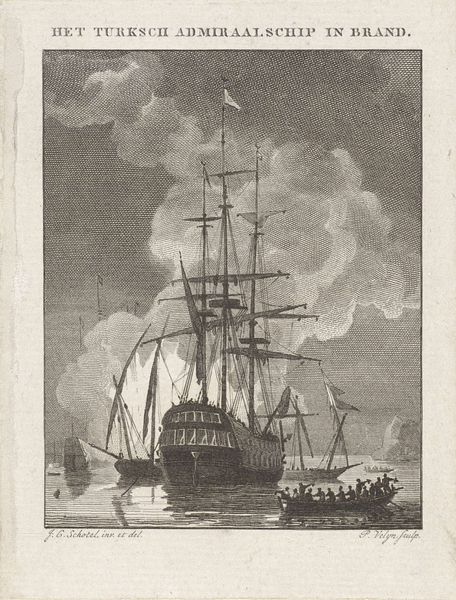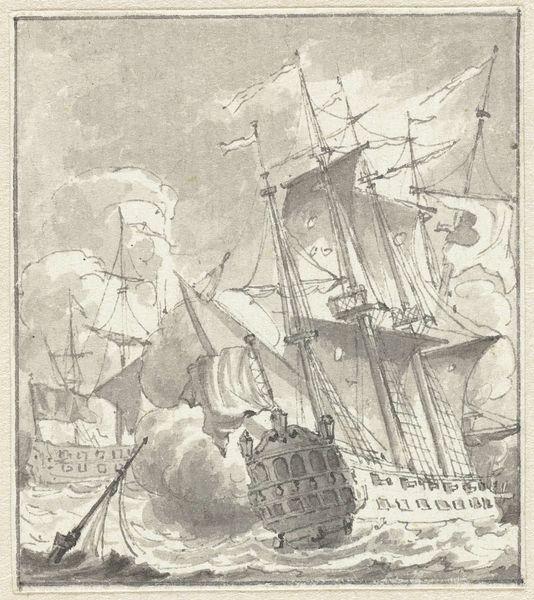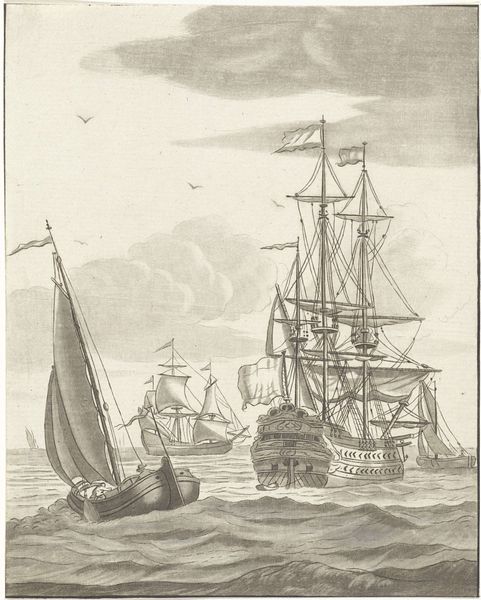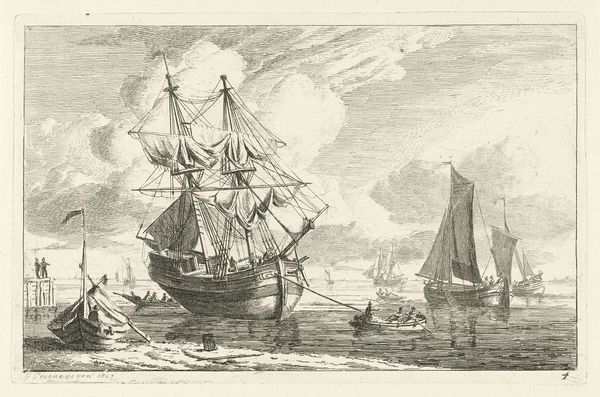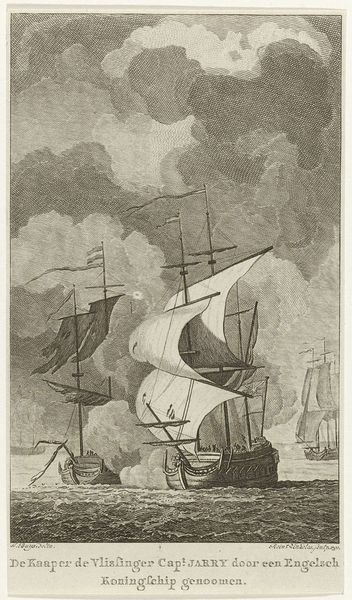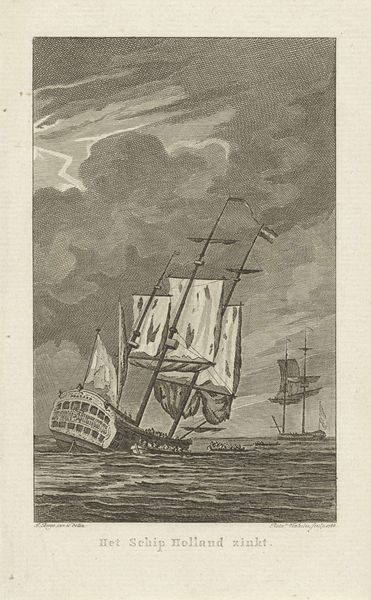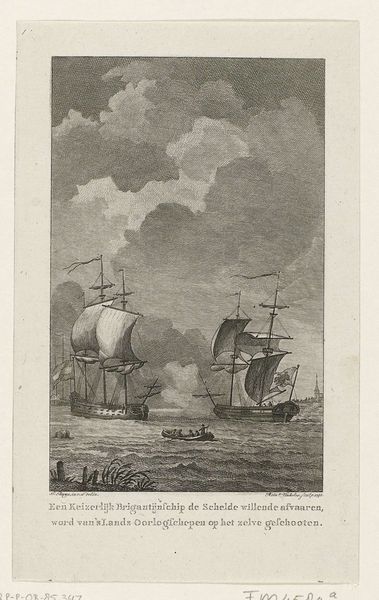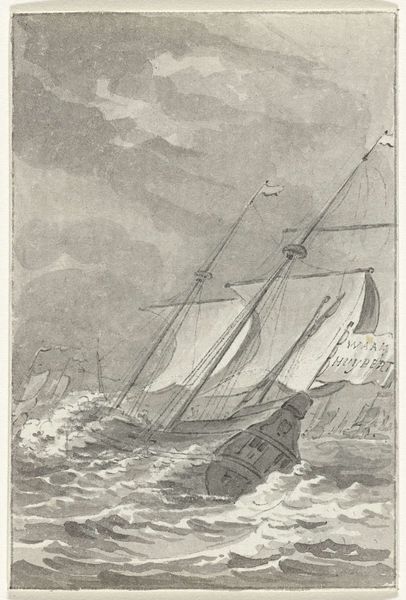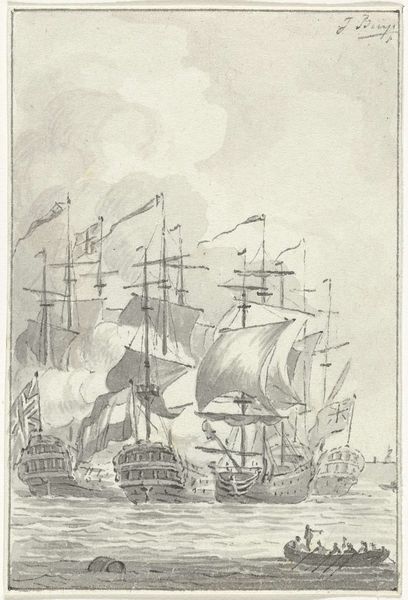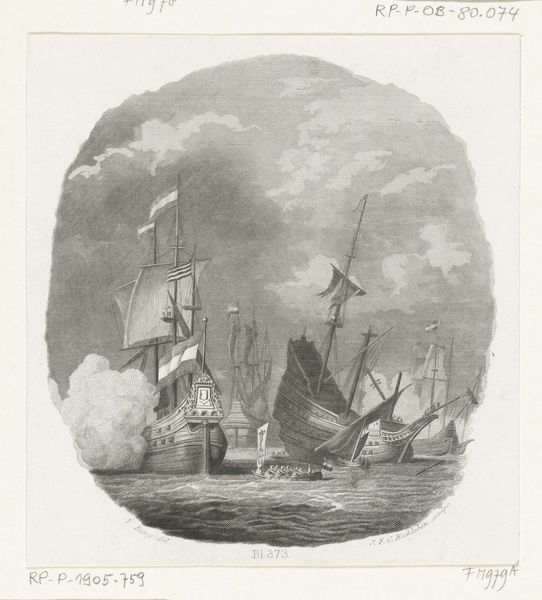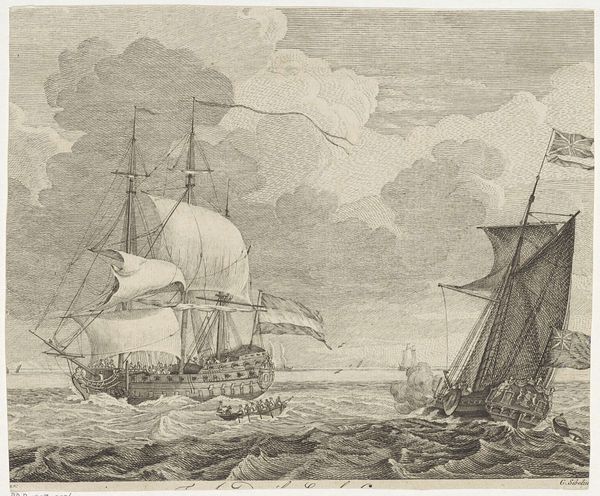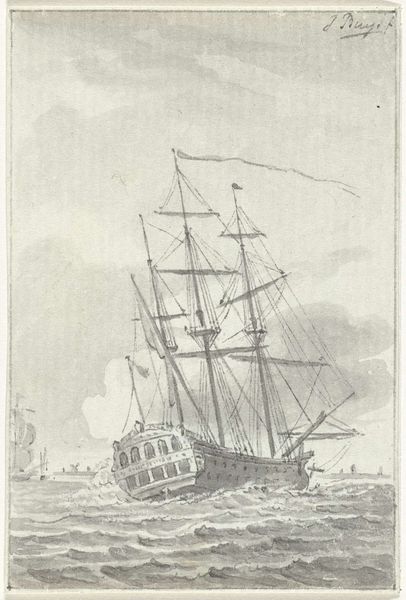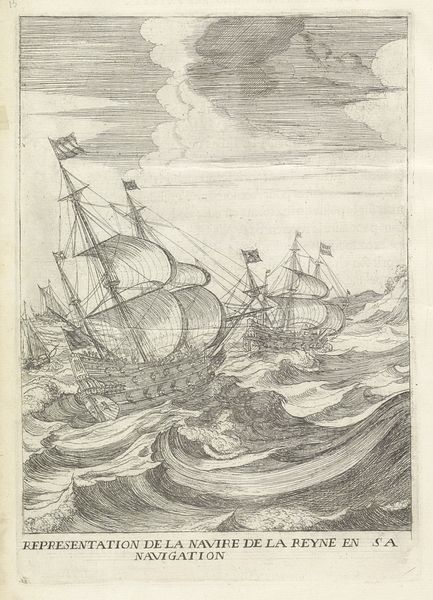
Dimensions: height 65 mm, width 55 mm
Copyright: Rijks Museum: Open Domain
Curator: This is a pen and ink drawing entitled 'In 't Jaar 1784', created by an anonymous artist around 1789 to 1810, now held at the Rijksmuseum. The seascape scene captures the movement of a fully rigged ship. Editor: What immediately strikes me is the dynamism, that sense of implied action. The vessel cuts a path through choppy waters; smoke billows from the structure to the left—it seems to hum with potent tension. Curator: Indeed, the stark contrast of light and shadow amplifies that feeling. The choice of pen and ink is fascinating. Its monochrome allows us to focus on the texture, the way the light reflects off the water, and the sharp lines that give the ship its structure. The labour of creating this level of detail must have been immense. Editor: I agree. Observe how the artist utilizes cross-hatching to build form and depth. The masts are slender vertical lines intersected by a web of rigging; it all builds a complex geometry. And notice that flag with its bold, iconic imagery rippling against the sky! Curator: Which undoubtedly speaks to a specific time and political ideology! But more broadly, consider the consumption of maritime imagery at this time. Pictures like this would have circulated widely, celebrating Dutch maritime power and subtly shaping public perceptions of trade, conflict, and national identity. Who were the printmakers, distributors and consumers of images like this and how did their social contexts influence production and reception of this work? Editor: It is indeed rich in historical context! What appears a genre-painting, contains also a clear statement about compositional balance, the strategic placement of that smoking gun. The eye dances between the architectural solidity on the left and the freedom suggested by the ship's open course on the right. Curator: Right. And who is missing? We might not see them, but where are the enslaved peoples that undoubtedly worked the colonial industries this ship profited from? To see that labour, which is so vital to understanding art history, it would require re-thinking some of our perspectives. Editor: So, beyond aesthetics, we're urged to consider the economic and social framework—the unseen workforce that propelled such visual testaments to maritime achievement. Thank you, Curator. Curator: And thank you for prompting an invigorating reflection through the composition.
Comments
No comments
Be the first to comment and join the conversation on the ultimate creative platform.
